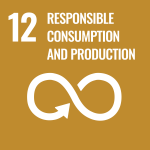Chemicals can help save jet fuel
4.5 billion passengers traveled by air worldwide in 2019. Pre-Covid-19 passenger air travel produced the highest and fastest growth of individual emissions. Despite a significant improvement in the efficiency of aircraft and flight operations over the last 60 years, the aviation industry is responsible for 915 million tonnes of CO2 annually. To lower these emissions further, the aviation industry is looking for fuel saving solutions.
Reducing the weight of an aircraft means less fuel is needed for the same flight. Less fuels means less emissions. And this is where the chemical industry can help by creating advanced materials that make planes lighter without compromising their safety.
For example, SABIC offers thermoplastics or thermoplastic compounds which can replace traditional materials in much of the aircraft cabin. These solutions can be applied to window frames, table trays, armrests, electrical connectors, ventilation systems, panels, and seat cladding. Concepts have also been developed for composite panels for sidewalls and ceilings. Additionally, SABIC is researching the use of hybrid moulding – a combination of forming laminate and then covering it with thermo-composite material – which could be used to reduce the weight of armrests and structural seatbacks.
Solutions using plastics? How sustainable is that?
The thermoplastic solutions are both strong and lightweight made up of resins that are inherently flame retardant so these materials also meet stringent standards for flame, smoke, toxicity and heat release. Thermoplastics can also be recycled and remoulded, to build new components when needed. This helps to save costs on components, improving sustainability and reducing the carbon footprint.
This has the potential to be a game-changer for the aviation sector.
Associated SDG Targets

